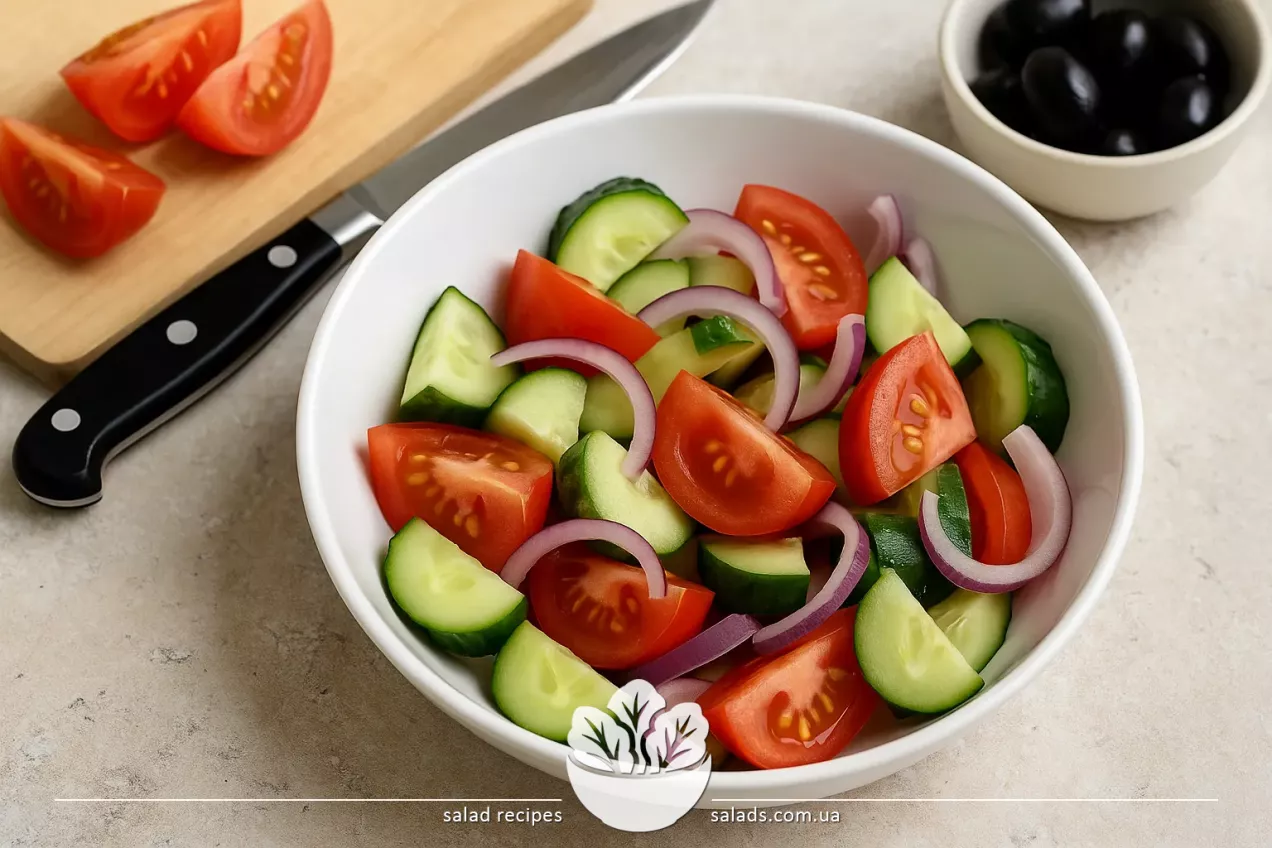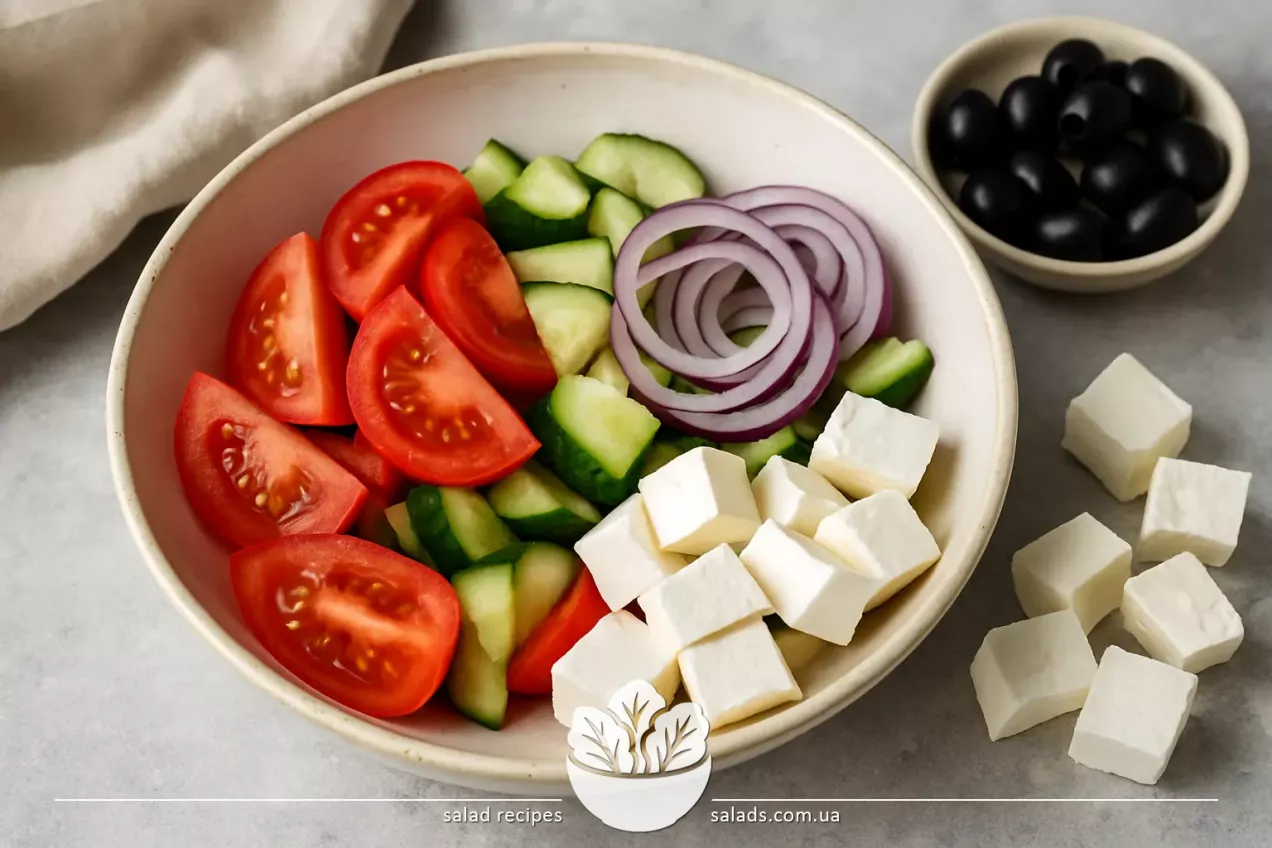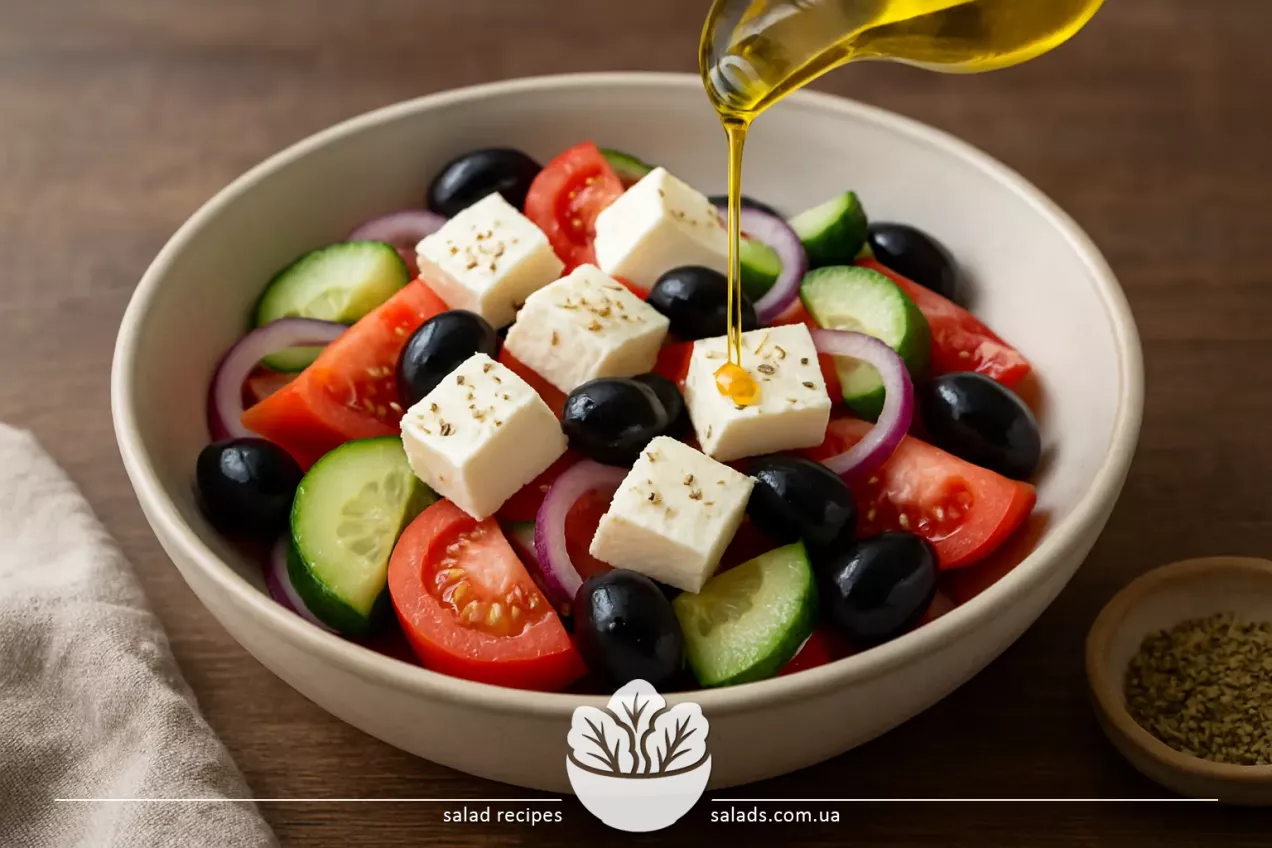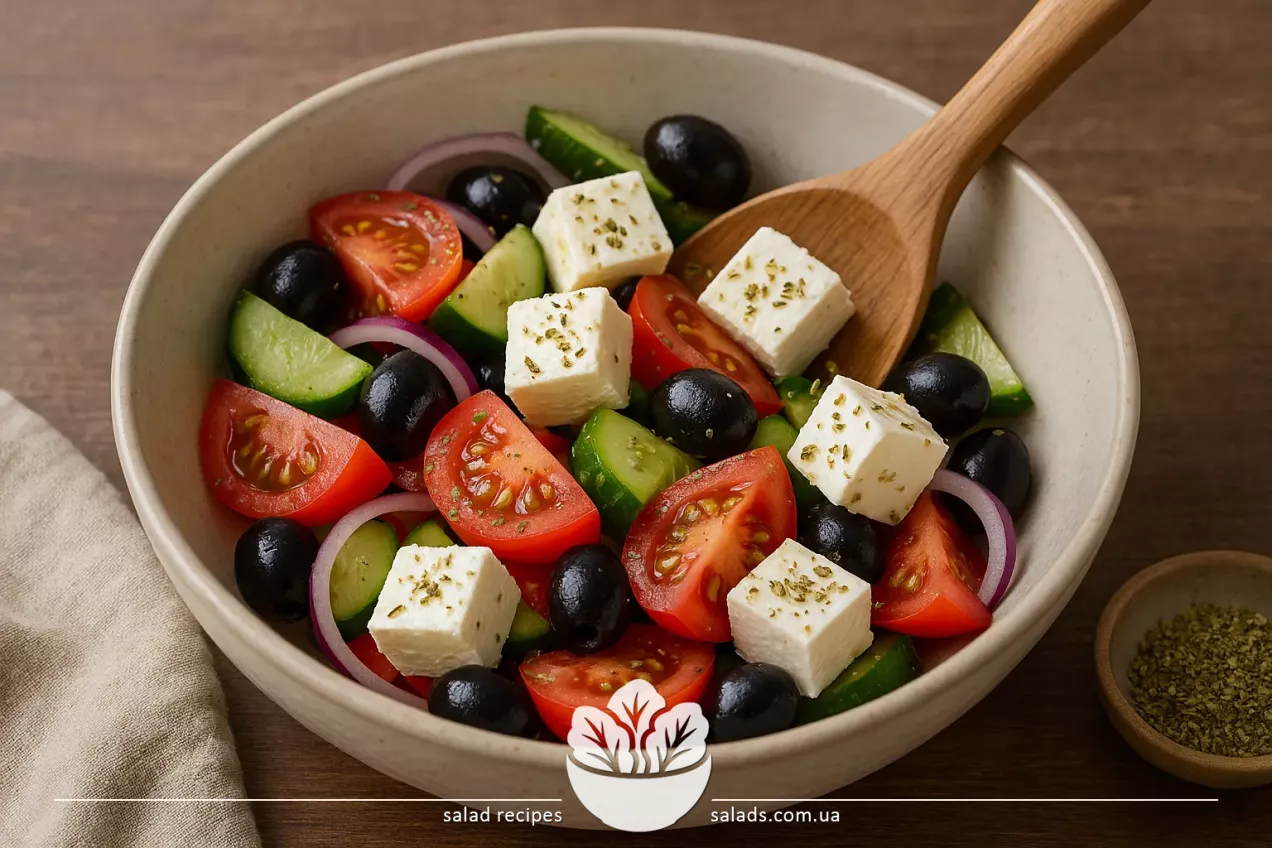
I discovered Greek salad back in my student years when I was looking for light no-cook dishes that could be made quickly and without complicated ingredients. And although much time has passed, this salad remains my favorite. Its main advantage lies in its simplicity and naturalness: each ingredient is clearly felt, nothing overpowers the rest, and the oil-based dressing with oregano enhances the freshness of the vegetables.
The salad is perfect for those who watch their diet or follow the Mediterranean diet. Thanks to olive oil and feta cheese, it contains healthy fats, while vegetables are a source of vitamins and fiber. I often prepare it in summer at the dacha, using fresh vegetables from the garden – the taste becomes simply exceptional. By the way, in the classic recipe, feta is not crumbled but left in large chunks – this adds authenticity to the salad.
When cooking for guests, I serve it in a clear deep salad bowl – the bright colors look appetizing. On weekdays, I simply serve it for lunch – as a main dish or along with fish, chicken, or bread. Sometimes I replace black olives with green ones, add a bit of bell pepper or basil leaves – but I always stick to the main principle: minimal processing, maximum benefit. This salad is not only delicious but also inspires a healthy lifestyle.
Ingredients for the Greek Salad Recipe
Greek Salad Preparation Recipe
Prepare the Vegetables
First, I wash the vegetables, dry them thoroughly, and cut the cucumbers into half-moons or large cubes – depending on the presentation. I cut the tomatoes into wedges or, if using cherry tomatoes, just in half. I always choose red onion – it's sweeter and less pungent. I slice it into thin half-rings, and if it's too sharp – I pour boiling water over it or marinate it for a few minutes in a water and vinegar mixture.
Add the Olives and Cheese
I add whole olives – they give the dish a special Mediterranean touch. I cut the feta cheese into large pieces – usually into 1.5–2 cm cubes. It's important not to mix the salad too vigorously to preserve the shape of the cheese. If I want to make the presentation more authentic – I place the feta on top as a single block, as in the traditional recipe.
Dress the Salad
I drizzle everything with olive oil – unrefined, with a real aroma. I add a pinch of salt, a bit of freshly ground pepper, and of course, oregano – it’s what gives that familiar “Greek” aroma. I mix everything gently, just once or twice with a spoon from bottom to top, so the vegetables stay juicy and the cheese remains intact.
Serve Immediately
Greek salad is best right after preparation – when the vegetables are crisp, and the cheese holds its shape. I usually serve it in a deep bowl or individually – in dessert bowls or small salad dishes. It pairs perfectly with white bread, lavash, or as a light side dish to meat or fish. If there are leftovers – I store them in the refrigerator for no more than 6 hours.
Tips
-
It’s not worth making the salad in advance – it tastes best fresh. After a few hours, the vegetables release juice, and the texture becomes less appealing.
-
To reduce the bitterness of the onion, I pour boiling water over it for 1 minute or add it to a marinade. After this, it stays crunchy but loses its sharpness.
-
Do not replace olive oil with another type – it is what creates the characteristic Mediterranean flavor. If the oil is of poor quality – it’s better not to add it at all.
-
If feta is too salty, I soak it in water for a few minutes. This is an old culinary trick that saves the salad's taste.
-
Greek salad is a great option for a picnic. I pack all the components separately into containers, and right before serving, I mix them quickly – guaranteed freshness.



